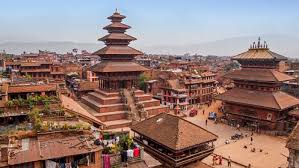Rich Geography and Cultural Heritage Boost Nepal’s Tourism Appeal
Nepal’s captivating landscape, crowned by towering snow-capped peaks like Sagarmatha (Mount Everest), blends breathtaking natural beauty with vibrant cultural heritage. The country boasts diverse ecosystems, from lush jungles to alpine terrain, drawing trekkers, mountaineers, and cultural enthusiasts worldwide. This multifaceted allure positions Nepal as a leading destination for mountain tourism and adventure travel, attracting visitors interested in trekking, climbing, water sports, jungle safaris, and cultural tours.
Tourism Statistics and Visitor Trends
Despite these natural gifts, the annual number of international tourists remains modest relative to Nepal’s potential. In 2024, just over 1.14 million visitors arrived, nearing pre-pandemic levels but still short of what the country could accommodate and benefit from. Historically, ambitious campaigns like ‘Nepal Tourism Year-2011’ aimed to lure one million tourists, yet various factors impeded sustained growth. Highlighting the country’s tourism trajectory, the tourism influx dropped dramatically during the global health crisis but is now showing signs of recovery.
Economic Importance of Tourism: Foreign Exchange and Jobs
Tourism plays a critical role in Nepal’s economy, generating significant foreign exchange and providing jobs to hundreds of thousands, both directly and indirectly. Mountaineering alone contributes millions through permit fees, with Everest climber permits generating as much as US$5.8 million in a recent spring season. Notably, permit fees for Everest climbs have increased from US$11,000 to US$15,000, set to boost revenues further starting from September 1, with variable fees depending on the climbing season.
Tourism Infrastructure and Investment Challenges
Various regions of Nepal — including Kathmandu, Lumbini, Chitwan, Pokhara, and others — have witnessed considerable investments in tourism infrastructure, particularly accommodation facilities. However, issues like operational inefficiencies at airports such as Gautam Buddha International Airport (GBIA) in Bhairahawa hinder tourist inflows despite substantial private investment. Infrastructure expansions, including cable cars, zip flyers, and paragliding facilities, are diversifying tourist activities, yet practical challenges like transportation connectivity and air traffic pressure remain.
Key Regional Tourist Arrivals (2025 Estimates)
| Region | Tourist Arrivals (Air) | Notes |
|---|---|---|
| Kathmandu | High volume | Main gateway with TIA airport pressure |
| Lumbini & Surroundings | Growing | Investment intact; airport underused |
| Pokhara | Moderate | New airport operational but limited flights |
| Chitwan | Growing | Wildlife and jungle safaris attraction |
Road and Air Connectivity: The Critical Link for Tourist Growth
While Nepal is geographically close to giant tourism markets like India and China, the lack of smooth road networks and efficient air connections restricts visitor numbers. Kathmandu’s Tribhuvan International Airport struggles with high traffic, whereas the newer airports, including GBIA and Pokhara International Airport, are underutilized. Moreover, bans on Nepali airlines in European airspace since 2013 have limited direct access from important markets such as Europe, Australia, and Japan. Improved connectivity could significantly diversify and increase tourist arrivals.
Growing Opportunities with Vietnam
In promising news for Nepal’s tourism diversification, the country has agreed to explore direct air links with Vietnam, a fast-growing source market where Buddhist heritage and adventure tourism resonance are high. With over 4.1 million Vietnamese travelers venturing abroad in the first half of 2025, direct flights could usher in a new wave of visitors eager to experience Nepal’s unique destinations.
Challenges and Strategies to Maximize Tourism Potential
For Nepal to fully harness its vast tourism potential, it must overcome infrastructure bottlenecks, improve marketing strategies internationally, and build on cooperative air and land transport improvements. Strengthening the operational capacity of airports and enhancing safe, smooth roadways will directly impact tourism growth. Tourism stakeholders also highlight the need for sustainable development practices to balance environmental preservation with economic gains from tourism.
How This Impacts Transfers and Taxi Services
For travelers settling into Nepal’s cities and tourist hotspots, seamless transfers are crucial. Well-connected, reliable taxi and transfer services help visitors make the most of their trips. Platforms like LocalsRide.com stand out by providing transparent options where travelers can choose their exact vehicle type, understand the make, model, and driver ratings beforehand, and avoid surprises with fare prices. This level of clarity becomes increasingly vital as Nepal aims to boost visitor numbers and enhance overall tourist satisfaction.
Summary and Outlook
Nepal is blessed with extraordinary natural and cultural assets, positioning it as a world-leading mountain tourism destination. Despite a rebound in tourist arrivals post-pandemic, the country faces hurdles related to infrastructure, connectivity, and international marketing that continue to limit its tourism growth compared to its potential. Increasing Everest permit fees, opening new direct flight routes, and investing in tourism facilities demonstrate Nepal’s commitment to expanding this key economic sector. This growth, in turn, necessitates improved transfer and local transportation services to ensure tourists have smooth, affordable, and reliable mobility options throughout their stay.
Key highlights:
- Nepal’s mountain scenery and cultural richness are major international attractions.
- Tourism contributes significantly to foreign exchange earnings and employment.
- Challenges include underused airports, road connectivity issues, and air traffic restrictions.
- Potential for growth with emerging markets like Vietnam through direct flights.
- Improved transport infrastructure and services are vital to support tourism expansion.
While reading reviews and data gives valuable insight, nothing compares to firsthand travel experience. LocalsRide offers verified taxi and transfer services at competitive prices, empowering travelers to pick exactly the right options without hidden fees or last-minute surprises. Through extensive vehicle selections, reasonable fares, and transparent driver profiles, users can enjoy local rides with peace of mind and convenience. Zarezerwuj przejazd on LocalsRide.com to start your Nepal journey on the right foot.
Looking forward, Nepal’s tourism development may not reshape the global travel map instantly, but its unique offerings and outgoing initiatives are carving a steadily more promising path. LocalsRide keeps pace with these evolving trends, ready to connect visitors with trusted local drivers worldwide. Start planning your next adventure and secure your worldwide transfer with LocalsRide.

